"Maybe you feel you can justify your actions by saying to yourself, your friends and your family that you are going to tour school to “gain tour school experience.” If this is the case, then you will quickly discover that tour school is a very expensive form of experience to be had."  We speak to numerous golfers (and quite often their parents) via email, Skype, or face to face on a monthly basis about what the minimum requirements are for an amateur golfer to successfully make the transition to a professional golf tour through a tour school. As I’m sure you can imagine, there’s predominantly no shortage of male and female golfers very interested in this subject, and they are investing a great deal of effort in preparation to go to tour school, getting a card, to play on a professional golf tour. Maybe you are one of them? Now if you satisfy their very reasonable entry criteria (I have a lot more to say about this later on), tour schools will open their doors to you with welcoming arms, inviting you try out. But before you sign on the dotted line to commit yourself to the tour school process, there are some things--we call ‘Harsh Realities’ you absolutely must know about, before you invest the time, effort and money to take the plunge into professional golf via a tour school. The First Harsh Reality The first thing you must understand (and I do mean understand) is that being a top ranked amateur golfer in your region, or even at national level doesn’t guarantee much of anything when you go to tour school as there are literally hundreds and hundreds of amateurs (and professionals) also teeing it up who can play just as well as you, and some, much better. Where you might have been the big fish in your little pond in your home town, District, State or Province, now you will be a minnow competing in a massive ocean of golf talent. Now believe me when I say that this comes as a big shock to many amateurs when they realize that their game is nowhere near good enough to qualify--let alone compete on a professional golf tour.  The Second Harsh Reality Earlier I mentioned ‘reasonable entry criteria,’ and for many tours this means that if you possess a low handicap (under 2), or the equivalent playing standard, then you will be able enter tour school. Now here’s the thing you need to pay attention to regarding this. To get through any tour school it is very likely that you will have to produce a scoring average for the tournament of better than par over one or two golf courses that the tour uses for their tour school. Now if you enter the tour school with a handicap of scratch to 2 it is highly unlikely that you will earn your card as this standard of golf simply won’t be good enough. Now ask yourself why a professional golf tour would invite low handicap golfers to enter their event when they aren’t good enough to qualify?... Tour schools love rookie pro's who are of the mind-set; “I want to try tour school out to see if I’m good enough.” You NEVER ‘try’ tour school out! Golfers who are good enough to get through the tour school process and get their tour card, quickly realize that they are competing in pro events where the standard of competition is way better than what they have ever faced as an amateur, regardless of the tournaments level of importance. Tour schools want the best of the best, but having said that, if you are naive enough to enter a tour school with a golf game no where near good enough, then understand that you will simply be donating your hard earned cash (or someone else’s), to their cause. Maybe you feel you can justify your actions by saying to yourself, your friends and your family that you are going to tour school to “gain tour school experience.” If this is the case, then you will quickly discover that tour school is a very expensive form of experience to be had. The entry fee’s, the transport costs, meals, caddie fees, and accommodation costs to stay in a foreign location for at least 2 weeks add up. I guess the one consolation of this is that you will start to understand just a small part of what self-employed professional golfers know all too well, that being a professional tour golfer is an expensive exercise! At the end of the day all tour schools are nothing more than tour player boot camps that put you into a pressure cauldron with hundreds of other hopefuls, test your mental toughness and scoring ability, and squeeze out the survivors  Think of them like expensive turnstiles that let hundreds of hopefuls in, keep just a few, and let the rest exit out the other end—less your entry fees and associated costs. Tour schools are first and foremost a business, and the business community would describe them as ‘cash cows,’ which is business speak for a business that generates a consistent return of profits that far exceed the amount of cash required to start it. The tour schools know that when they market new tour school dates that literally hundreds of hopefuls will enter their school, and they receive a literal dump truck full of entry fees. However, since (in most cases) less than 5 percent of the of all the golfers competing will actually earn a card, the rest of the entry fee's is a windfall for them. The bottom 95 percent that don't get a card will go back home to their clubs with their tail between their legs trying to work out what went wrong, and what they need to do to get one of those tour cards next time. Many won’t ever go back.  The Third Harsh Reality OK so let’s assume that you were good enough to get a card to play on a pro tour. Congratulations! The challenge you now face is playing well enough in a limited number of events to finish high enough up the money list to keep your card for the next season--or in some cases to continue playing that season. Now this is not nearly as easy as it sounds, let me explain. You see depending on the tour you qualify on, as a rookie you will not be eligible to play in the biggest and most lucrative events on the tour, which basically means you sit out for one or more weeks at a time, with no events to compete in, until an event you are eligible to play in comes around. (*If you have a card on one of the major golf tours you can usually play on their secondary tour if an event coincides with the event you weren’t eligible to play in) So even though your tour might have an advertised schedule with 22 events, you might be only eligible to play in 15 of them. This means that you only get 15 chances to make enough income finishing high enough in the tournaments you can play in to keep your card. So let’s say for example that you need to earn a minimum of $150,000 for the season to keep your card for the next season. You will have just 15 chances to make the cut and play well enough over the final 2 days to earn a cheque that on average must add up to 10,000 dollars or more, to come back next season. Now how good do you think you would have to play in those 15 events? In other words, ask yourself what your round 3rd and 4th round scoring average would need to be to earn 10,000 dollars--15 times over the season? “It is an odd juxtaposition for a player to be rated in the top 500 golfers in the entire world (remember, that means he’s better than and ahead of millions and millions of others) and yet that is nowhere near good enough.” – Ross Biddiscombe (Author of Cruel School)  The Fourth Harsh Reality I looked up the progress of a very good young professional golfer in his mid-20’s who, as an amateur was the best golfer in his state, and was also one of the top 5 ranked amateurs in the country. This young man would score in the mid 60’s often in big amateur tournaments, and he even won a state level pro event over 4 rounds with a double digit 4 round total. Now as a professional he has gone through the process of making it onto one of the PGA Tour’s secondary tours, and nearly 4 years into his pro tour internship, his world ranking (at the time of writing) is 895, just 5 places lower than he was when he turned professional. Now, like I said, he is a really fine golfer, and can really play, and I’m sure he can go on to have a great career as a professional golfer, if he can make it through his pro tour internship. It just goes to show you that being a top gun amateur with a very low plus handicap (i.e. – 3 to – 6 against scratch) doesn’t guarantee much of anything in the pro game, except that you have more chance of making cuts and making cheques because of a proven low scoring ability in tournaments, than amateurs with low handicaps of scratch or above. So the big question you need to ask yourself is this; are you really (truly) good enough to go to tour school, or are you kidding yourself? However, don’t despair, it’s not all bad news. No one likes to waste their hard earned money, and yet many tour hopefuls are doing just that by investing in something they are just not ready for. So how do you know whether you are ready or not? So How Good Do You Really Have to Be? When you decide to go to a tour school, our advice is that your scoring average is at least 2 strokes better than par in top amateur tournaments over at least 2 seasons. You should be regularly scoring in the mid 60's and it should feel relatively easy to do. If you played 100 competitive rounds over 2 seasons as an amateur, here's the minimum performance level you would need to be able to achieve before you sign up to a tour school. Level 1) ...5 rounds would be 60 to 65 Level 2) ...55 rounds would be 66 to 70 Level 3) ...35 rounds would be 71 to 75 Level 4) ...5 rounds would be 76 to 80 Level 5) ...0 rounds would be above 80  More than 56% of Ricky Fowler's rounds were under 70 in 2013/14 More than 56% of Ricky Fowler's rounds were under 70 in 2013/14 At the very least, 50 percent of your competitive rounds would be under 70. You will also have scored under par over 3 to 4 rounds multiple times, and ideally you would have scored 10 under par or better at least once. This level of scoring should not come as a surprise to you if you simply study the results of professionals in tournaments from the minor tours to the major ones. To make cheques in professional tournaments, there are 2 stages.
This might look to you like it’s exaggerated, but it isn’t, it’s the reality of playing successfully as a professional golfer. Unless you can score like this, you simply won’t make cuts, and if you don’t make cuts--you don’t make cheques and if you don’t make cheques, your expenses will outweigh your income, and in no time at all, you will go broke! So take the time to set up a table like the one above, track every score in the tournaments you play in, fill in the blanks and see whether you really have enough game to go to tour school and get your card. We sure hope you do. Lawrie Montague and David Milne - Pro Tour Golf College Perth / Jakarta www.ProTourGolfCollege.com "Despite being based in Sydney where many of the tournaments are held and being able to minimize a lot of my expenses through billeting with amazing host families in other states I still lost money in both seasons as my golf expenses (flights, hotels, hire cars, caddie fees, tournament fees etc) were around $6,000 for the 2 month periods." Like a lot of aspiring female professional tour golfers, I have dreams of mixing it with the world’s best on the LPGA Tour and winning big tournaments along the way. I’m a self-confessed golf junkie, those who know me will testify that I literally live, breathe, eat and sleep golf and always need to ensure I keep things in balance. I’m addicted to self-improvement and have a love of numbers and statistics, sometimes to my own detriment in tournaments, as I start focusing on scores and scenarios instead of staying in the present. The excitement that comes with competing can be quite exhilarating and what I love about the game of golf is that for the most part, I’m the one in control of my success and failures. I really enjoy playing in front of crowds, it seems to help me sharpen my focus and there is no better pressure than having lots of eyes on you whilst you try to execute and pull off a difficult shot. It’s often said that the career of a professional golfer is a marathon, not a sprint and in much the same way I view the journey of improving in this game similar to picking up a jagged, unshapely rock that over time is polished and sculpted into perfect form, function and appearance.  I turned professional in November 2014 at the age of 34. Whilst that is considered pretty late to be embarking on such an endeavour, I came to the realisation a couple years ago that life is too short to not chase your dreams because time is going to pass regardless, so I might as well get busy doing what I love. As a player, I don’t have a stellar amateur career behind me but I do have a lot of life experience and belief in my ability to figure out the Rubix Cube that is professional golf. To date I’ve played 2 seasons on the Australian Ladies Professional Golf (ALPG) circuit and the process of plying my trade for money been a real learning experience complete with lots of ups and downs. The ALPG season typically spans a 2 month period with a mix of 6-8 Pro Ams and 4-5 major tournaments. During my rookie season in 2014/2015, I finished 26th on the ALPG Order of Merit with earnings of $5,160 including a 2nd place finish at the Renault Ladies Pro am at Castle Hill Country Club. Having some experience under my belt led to higher expectations for the 2015/2016 season, but I performed poorly and finished 40th on the Order of Merit with earnings of $2,005 and a season best finish of 11th at the Anita Boon Pro Am in New Zealand. Despite being based in Sydney where many of the tournaments are held and being able to minimise a lot of my expenses through billeting with amazing host families in other states I still lost money in both seasons as my golf expenses (flights, hotels, hire cars, caddie fees, tournament fees etc) were around $6,000 for the 2 month periods. It’s important to note that other life costs such as rent, food, health and car insurance, gym fees etc aren’t included in those budgets and thus the total incurred loss is much greater. No one said professional golf was going to be cheap! In assessing my performances, It became clear that there were 2 main reasons why I wasn’t competitive enough with the best players during our tournaments despite all the desire to be better:
 It requires a full-time commitment to practice and playing because the talent pool is too deep and there are several hundred, if not thousands of girls around the world right now giving the game that level of commitment who are hungry and dedicated to reaching the top. I did consider myself very lucky in that my employer at the time was very supportive and I had accrued enough paid leave to be able to actually have the whole 2 month period off to play both seasons. There will always be a battle we face as professional golfers in that you require a lot of funds to chase your dreams and unless you have financial sponsors or other sources of income to assist with that, then you need to find the money to compete through working, often full-time, but just don’t expect to be overly competitive if you never get off this cyclic merry go round. There has to come a point where you back yourself in with what you have in the bank or attain the funds some other way. To give you an idea of what a top Australian female player looks like, I’ll reference Victoria’s Stacey Keating as she played in all of the tournaments on the ALPG 2015/2016 season. Stacey is a 7 time winner on the ALPG circuit, including winning 3 times this past season. She has also won twice on the Ladies European Tour (LET) since turning professional in 2010. During the 2015/2016 season, in which she finished 2nd on our Order of Merit behind Karrie Webb, Stacey’s competitive score average was 71.68 against an average course par of 72.52, exactly 0.84 under par achieved over 25 rounds. She finished par or better in 11 of her 12 tournaments and amassed $43,741 in prizemoney over the 2 month season. Stacey plays full time across the ALPG and LET circuits and holds status on the American based LPGA and Symetra Tours. At the time of writing, she is currently the 7th leading Australian player on the Official Rolex World Rankings at 257th. She is known for her work ethic and dedication to her craft. Given the statistics I’ve just displayed, if you are serious about being a world class female professional, you can see why a fulltime commitment level is required to reach the top. Anything less than being “All In” and you might as well just enjoy the game for what it is, and lower your expectations. If you’re thinking Stacey’s competitive score average is pretty good, you’d be right but what sort of score average does it take to be the number 1 player in the World? Undoubtedly the courses on the LPGA draw more difficult setups and thus the score average is even more impressive. At the end of the 2015 calendar year, New Zealand’s Lydia Ko finished on top of the World Rankings, a position she still currently occupies. Her 2015 season saw her average 69.44 over 93 rounds which made her $2,800,802 in prize-money and resulted in 5 wins and 3 runner up finishes on the LPGA circuit alone. It’s pretty clear that if your goal is to be the best player in the world, you are going to need to be able to average around 2.5 under par on tour course setups over the course of a year and almost a hundred rounds of golf. "Anything less than being “All In” and you might as well just enjoy the game for what it is, and lower your expectations." 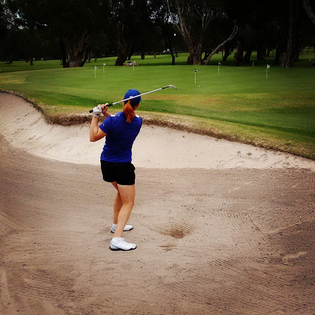 So knowing all this information and following my disappointing 2015/2016 season I made a decision that I needed to help create a better environment in order to be more competitive. I relocated in March 2016 from Sydney to Perth which has great weather year round and much better practice facilities at most of the courses. The move has allowed me to lower my expenses and invest more time in my game and work less in order to work on lowering my competitive score average and in turn earn more prize-money. Whilst the move is only 3 months old, practicing full-time has proved an exceptionally good decision thus far as it has allowed me to work on the areas of my game that required the most work. Comparing my statistics over those 2 seasons with the best players on the LPGA made the areas readily identifiable and I’ve been able to develop the right practice plans matched with far greater commitment to start attaining the required improvement. Being able to practice full-time has also allowed me to fix some technical flaws in my swing that’s drastically improved my ball striking and come without the rushed feeling that sometimes comes with making changes between tournaments. 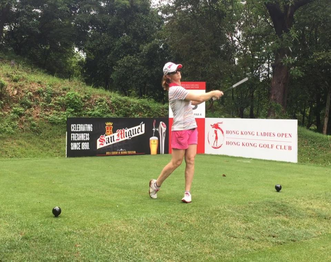 Whilst It is a relatively small sample size, since the relocation I’ve played 6 competitive rounds over 3 tournaments in Australia, China and Hong Kong for a competitive score average of 73.66 or 1.66 over par. I also managed to cash my biggest cheque and have my best finish in a full field event of my professional career thus far – finishing Tied 19th and making $3,100 in Hong Kong which was a great experience played in adverse weather conditions all week. Its been great to see the improvement take shape and with future goals to play on the LPGA circuit I know I’m finally heading in the right direction. Whilst I can’t see what the future ultimately has in store for my golf career, I’m not going to be sitting on the sidelines half committed wondering what if any longer, I’m going to see this through to the end! Breanna Gill - Instagram @breannagillgolf |
Archives
June 2019
|
Proudly Supported By
Copyright © 2011 - 2018 Pro Tour Golf College
Website Managed By Golf Performance Media
All Rights Reserved
Website Managed By Golf Performance Media
All Rights Reserved



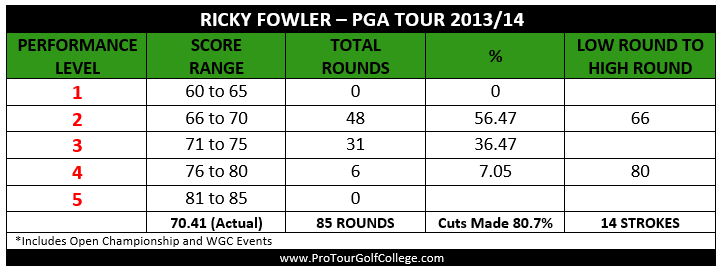

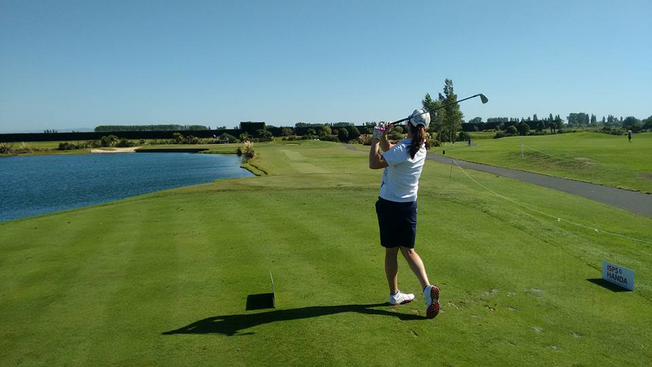

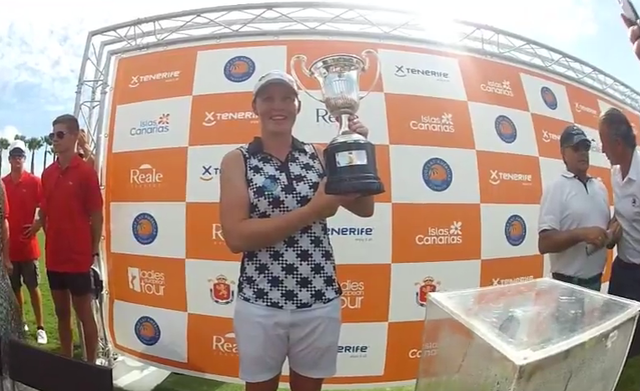

 RSS Feed
RSS Feed



